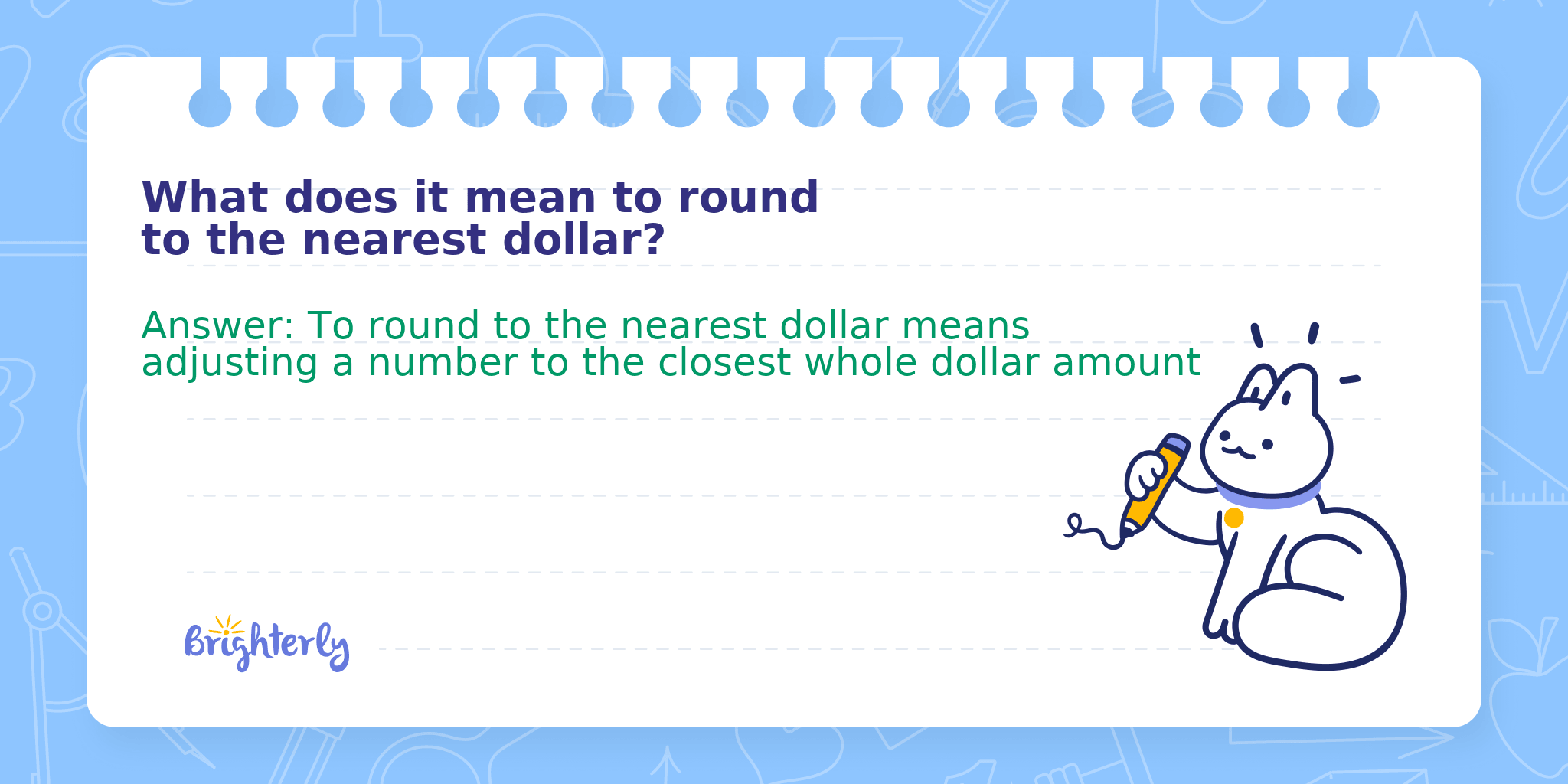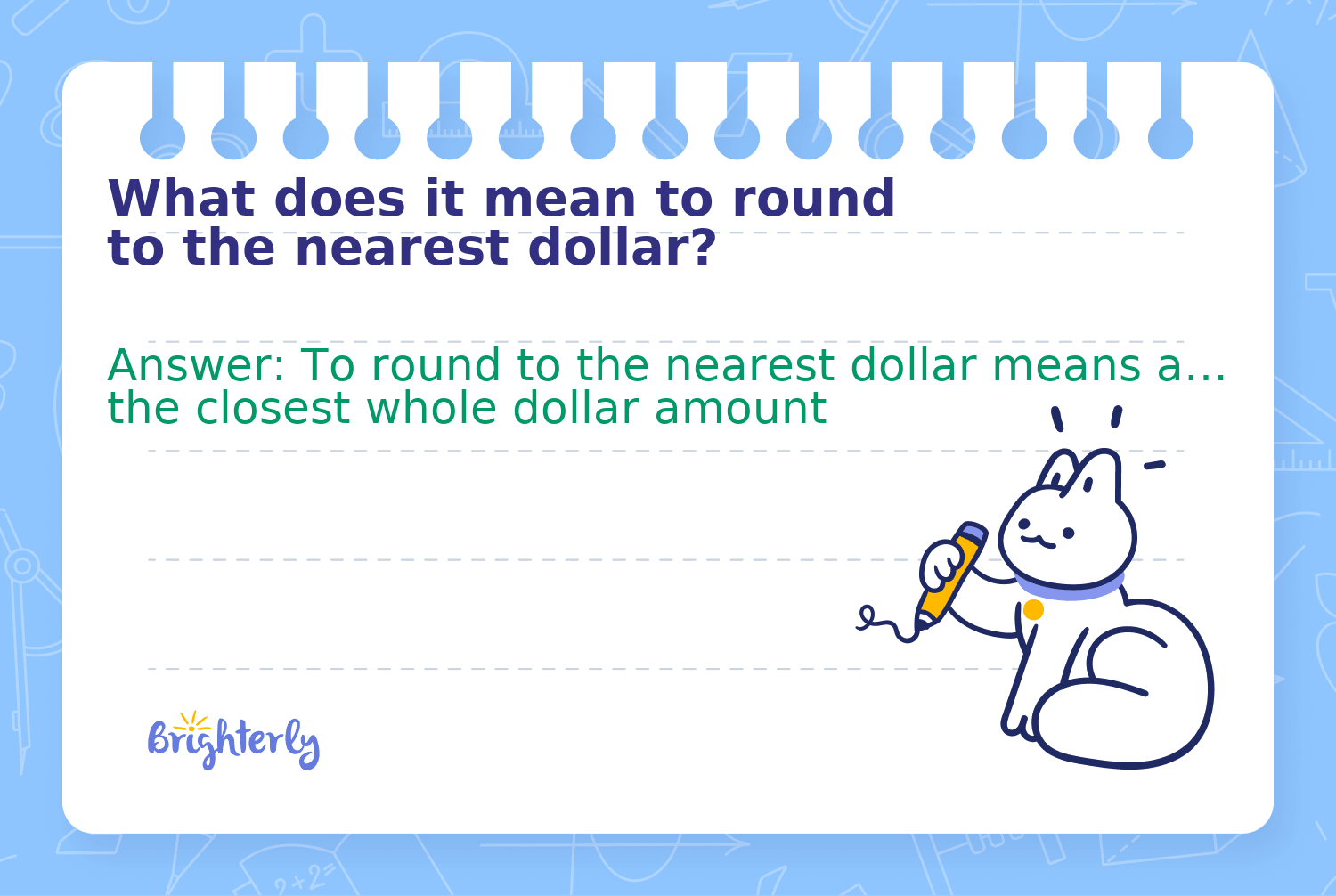
Reviewed by Janice S. Armas
What does it mean to round to the nearest dollar?
Answer: To round to the nearest dollar means adjusting a number to the closest whole dollar amount
Rounding to the nearest dollar refers to the process of reducing a number with one or more decimal places to its closest whole dollar value. This is commonly used in finance and everyday transactions to simplify numbers, making them easier to understand or handle. By assessing the value of the cents, you determine whether to round up to the next dollar or down to the previous dollar.
Methods
Math Tutor Explanation Using the Place Value Method
This method looks at the value in the tenths or cents place to decide if you should round up or down.
Step 1: Step 1: Look at the cents value (the number after the decimal point)
Step 2: Step 2: If the cents are 50 or more, round up to the next dollar
Math Tutor Explanation Using the Number Line Method
Using a number line helps visualize which whole dollar amount a value is closest to.
Step 1: Step 1: Plot the original amount on a number line between two whole dollars
Step 2: Step 2: Determine which dollar amount the number is closest to
Step 1:
Step 2:
Math Tutor suggests: Practice Rounding and Working with Dollars
Learn more about rounding and solving problems involving money and numbers close to whole values with these related exercises.
FAQ on Rounding to the Nearest Dollar
Do you always round up at .50?
Yes, when the cents are 50 or more, you round up to the next dollar.
What if the amount is exactly .00?
If there are zero cents, the number stays at that whole dollar.
Why do we round to the nearest dollar?
It's useful for estimating, simplifying transactions, and budgeting.
Does rounding to the nearest dollar affect accuracy?
Yes, you lose the exact cents, but the result is a simpler, more practical number.
Can I use the same method for rounding to tens or hundreds?
Yes, the general principles of rounding work for any place value.


